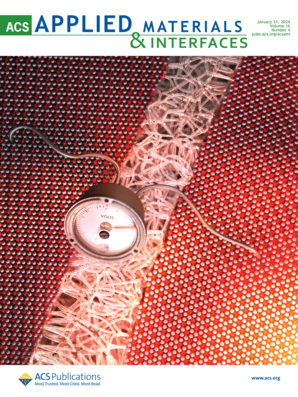基于昆虫复眼的机器视觉驱动微阵列无源温度传感器用于大范围高精度地表测绘。
IF 8.3
2区 材料科学
Q1 MATERIALS SCIENCE, MULTIDISCIPLINARY
引用次数: 0
摘要
实时、准确和被动的温度监测对于工业和科学应用至关重要。然而,传统的温度传感器通常需要外部电源,依赖于复杂的仪器,并且可能会干扰热场,从而影响被动传感场景下的测量精度。虽然热致变色材料提供视觉和被动的温度反馈,但它们的效用受到狭窄的灵敏度范围和主观解释的限制。为了解决这些挑战,本研究引入了一种受昆虫复眼合作感知机制启发的机器视觉微阵列无源温度传感器(MAPTS)。该系统由有机热致变色材料阵列组成,通过软光刻技术在柔性导热基板上形成图案,实现了宽范围的被动热感测。基于深度学习的ResNet-34架构可以从光学图像中破译颜色与温度的关系,从而实现高精度、非接触回归的温度预测。实验结果表明,MAPTS在0-70°C范围内实现了动态热响应,预测时间为50 ms。在高密度7 × 7阵列配置下,与传统的热致变色传感方法相比,该系统具有更好的外推性能(R2 = 0.9996)和更高的预测精度(平均绝对误差≤±0.3°C)。这项工作为各种应用中的智能温度监测提供了一种具有成本效益,高度准确和可靠的方法。本文章由计算机程序翻译,如有差异,请以英文原文为准。
Machine-Vision-Driven Microarray Passive Temperature Sensor Inspired by Insect Compound Eyes for Wide-Range and High-Precision Surface Mapping.
Real-time, accurate, and passive temperature monitoring is critical for industrial and scientific applications. However, conventional temperature sensors often require external power, rely on complex instrumentation, and may perturb the thermal field, compromising measurement accuracy in passive sensing scenarios. Although thermochromic materials offer visual and passive temperature feedback, their utility is limited by narrow sensitivity ranges and subjective interpretation. To address these challenges, this study introduces a machine-vision-enabled microarray passive temperature sensor (MAPTS) inspired by the cooperative perception mechanism of insect compound eyes. The system comprises arrays of organic thermochromic materials patterned via soft lithography on flexible, thermally conductive substrates, enabling wide-range passive thermal sensing. A deep learning-based ResNet-34 architecture deciphers the color-to-temperature relationship from optical images, facilitating high-precision, noncontact regression-based temperature prediction. Experimental results demonstrate that the MAPTS achieves dynamic thermal responses across 0-70 °C with a rapid prediction time of 50 ms. In a high-density 7 × 7 array configuration, the system exhibits better extrapolation performance (R2 = 0.9996) and higher prediction accuracy (mean absolute error ≤ ±0.3 °C), compared to conventional thermochromic sensing methods. This work presents a cost-effective, highly accurate, and reliable approach for intelligent temperature monitoring in diverse applications.
求助全文
通过发布文献求助,成功后即可免费获取论文全文。
去求助
来源期刊

ACS Applied Materials & Interfaces
工程技术-材料科学:综合
CiteScore
16.00
自引率
6.30%
发文量
4978
审稿时长
1.8 months
期刊介绍:
ACS Applied Materials & Interfaces is a leading interdisciplinary journal that brings together chemists, engineers, physicists, and biologists to explore the development and utilization of newly-discovered materials and interfacial processes for specific applications. Our journal has experienced remarkable growth since its establishment in 2009, both in terms of the number of articles published and the impact of the research showcased. We are proud to foster a truly global community, with the majority of published articles originating from outside the United States, reflecting the rapid growth of applied research worldwide.
 求助内容:
求助内容: 应助结果提醒方式:
应助结果提醒方式:


